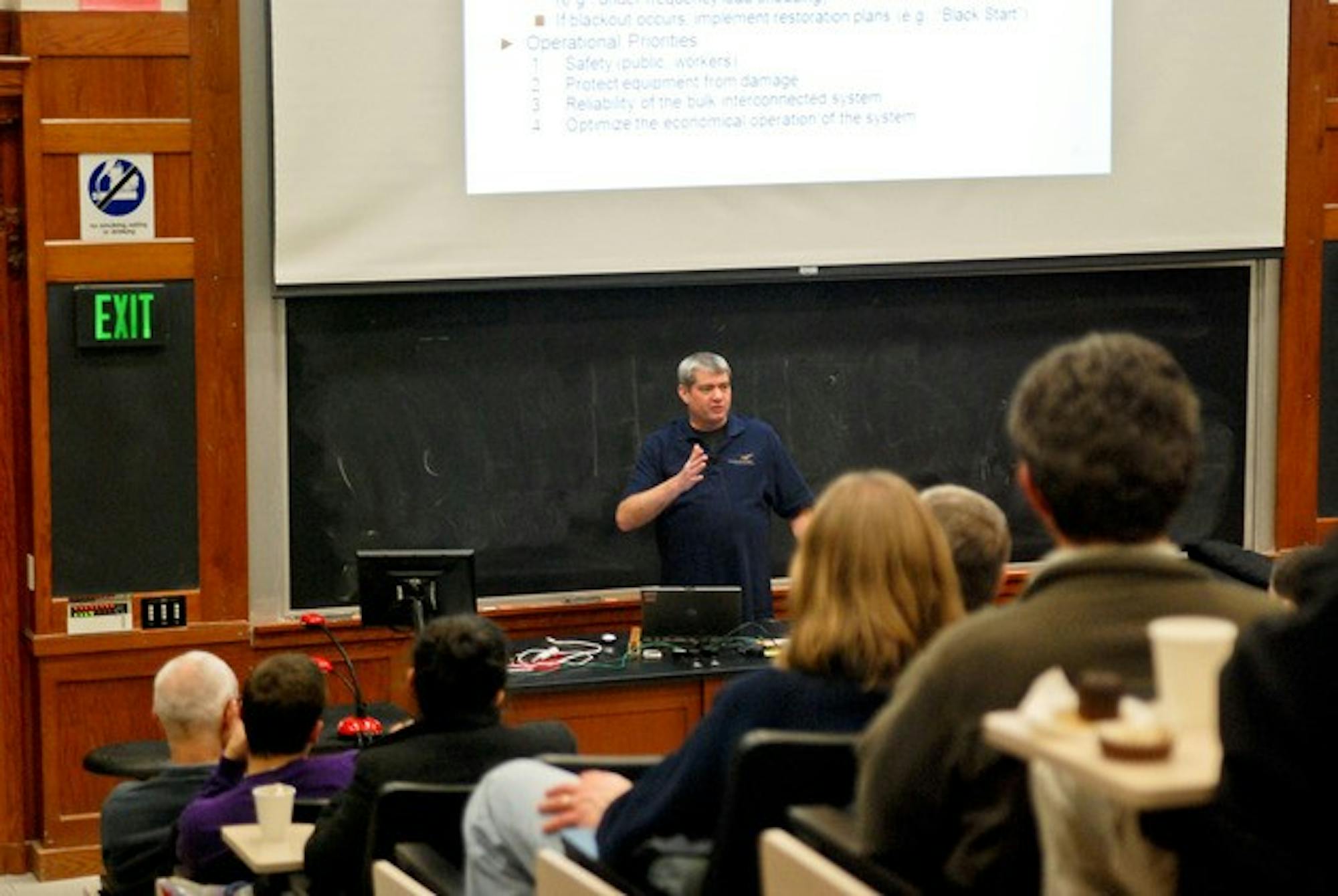The interconnected electric power grid, or smart grid, was chosen by the National Academy of Engineering as the top engineering achievement of the 20th century.
This grid facilitates the efficient transfer of electricity.
"A smart grid is using information technology to enable more effective delivery infrastructure," he said.
To ensure optimal operation of the grid, where electricity travels at a rate of 1,000 miles per second, engineers must think ahead and plan solutions to problems that do not yet exist.
"That's faster than you can manage from a human perspective," he said. "You have to have pre-positioned the response to that without having to come up with that plan as it happens."
In order to analyze and solve potential problems that could harm the grid, electrical engineers create a list of "credible contingencies," or issues that could potentially arise.
They then proceed to ensure that the grid has a stable response if the imagined issues come to fruition.
The process involves calculating what is likely to go wrong, evaluating its severity and finding the best way to ensure it does not bring down a substantial portion of the grid.
"This is all done to minimize the likeliness of a cascading failure," he said.
Over time, the smart grid has become very effective at avoiding failure and moderating itself to avoid potentially dangerous situations, according to Dagle.
"The system is there to save the system," he said. "No matter how that situation happened, it's going to work to bring that situation back to a stable equilibrium."
During the course of his lecture, Dagle discussed several important blackouts in American history and the way they impacted the development and improvement of the smart grid system.
On Aug. 10, 1996, a blackout occurred when neighboring utilities failed to coordinate with one another and the system became unstable and lost transmission lines, Dagle said.
The blackout took place even though an computer model, which later proved incorrect, had predicted that there would be no blackout under the same conditions.
This sparked an increased push for model validation, he said.
The largest blackout to affect a North American grid took place on Aug. 14, 2003 and stemmed from four root causes, Dagle said.
The first problem was a lack of institutional memory, according to Dagle.
The utility did not conduct a comprehensive evaluation of the system limitations, even though such issues had been discussed and amended before.
Furthermore, a lack of situational awareness contributed to the expansive blackout. The alarm processor that should have alerted operators to the blackout was not functioning at the time when transmission lines were tripping, and the operators were not aware of its problems until it was too late.
"When it's failed, that's bad because the operators don't know what's going on," he said. "When it's failed and the operators don't know it's failed, that's worse because things are happening and they don't know they're happening."
Another issue that led to the largest blackout in American history was inadequate vegetation management, Dagle said. Trees grew in the way of transmission lines and interfered with the transfer of electricity.
The blackout was further exacerbated by poor management from the reliability coordinator.
Although the 2003 blackout affected millions of people, most were back online by the next day because of the grid's efficiency and because the blackout did not damage any infrastructure.
The smart grid is highly resilient, but the introduction of a cyber layer can add a "brittleness" to the system that detracts from this resilience, Dagle said.
In order to avoid this problem, technologists need to think ahead and ensure that the system is compartmentalized enough to avoid potential for attack and widespread harm, he said.
Students who attended the lecture said that it effectively explained an aspect of the technological universe that they were previously unfamiliar with.
"As a computer science guy, we usually know nothing about the connection to the grid," Chen Fang GR'16 said. "But this lecture was a high-level description of what's happening in the electricity world, and it's good to learn something about that."
The lecture, titled "Maintaining Grid Resilience with the Adoption of Smart Grid Technologies," was held in Steele Hall.




